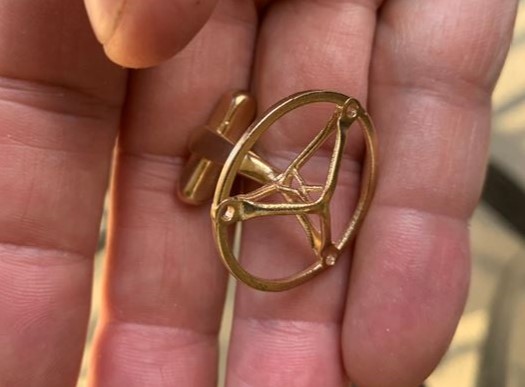A Creative Take on Generative Design & 3D Printing

 When you think of applications for 3D printing, men’s fashion is probably not the first thing to come to mind. That’s the great thing about innovation though – it is often unexpected.
When you think of applications for 3D printing, men’s fashion is probably not the first thing to come to mind. That’s the great thing about innovation though – it is often unexpected.
A rather fun and unique project I worked on recently involved that exact combination. Solid Edge together with our partner Shining 3D recently had the opportunity to participate in Future Day held on November 10 at the headquarters of menswear retailer HIRMER in Munich’s city center in Germany. Visitors were invited to discover current technological developments from 3D printing to robots to virtual reality.
Our part in the event was to show which technologies are currently in demand in the field of additive manufacturing and 3D printing and how these relate to menswear. For this event, I designed cufflinks and a heart-shaped pendant for a necklace using generative design technology. The files will be included at the end of this post, so you can customize them yourself in Solid Edge (download the free Student Edition) and have them 3D printed just in time for the holidays. More on that later.
First, let’s look at what exactly is generative design.


Generative Design is a radical departure from conventional design practices and is by definition the creation of shapes decided by a set of rules, or in other words, software algorithms. In essence, the 3D CAD designer is no longer the primary creator, taking the position of a “problem framer” specifying up front design goals such as design space, constraints and keep out areas. The computer software then decides where material should be removed. Constraints define then decide the structural results by generating an optimized part that look eerily similar to creations found in nature. The potential benefits are striking. You can learn more with this free course on generative design available on Udemy available here: udemy.com/topologyoptimization

Typically you would use generative design in cases where you want to maintain structural integrity while making a part or product lighter. In this case, of course, it was simply a fun and unique way to incorporate new technologies and design aspects into fashion. I used Shapeways to 3D print in both brass and genuine silver. There was about a 2 week turnaround time, so if you are thinking of getting these as a holiday gift for someone close to you, keep that in mind.
If you’d like to order these stylish accessories for yourself or others, you can order them here: https://www.shapeways.com/designer/devitry/creations

About the author
John Devitry is a Research Fellow at the Center of Space Engineering at Utah State University. From 2004-2015, John taught the introductory classes for Mechanical and Aerospace Engineering at USU while also working as the CAD Administrator at Space Dynamics Laboratory – the research arm of USU.
Over the years John has developed a unique and compelling approach to teaching mechanical engineering and 3D design, introducing the concept of Conceptual Design Blending as a way to facilitate creative thinking with engineering graphics students. View his available courses on Udemy here: udemy.com/user/johndevitry


